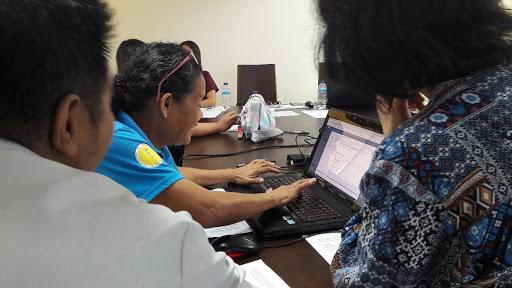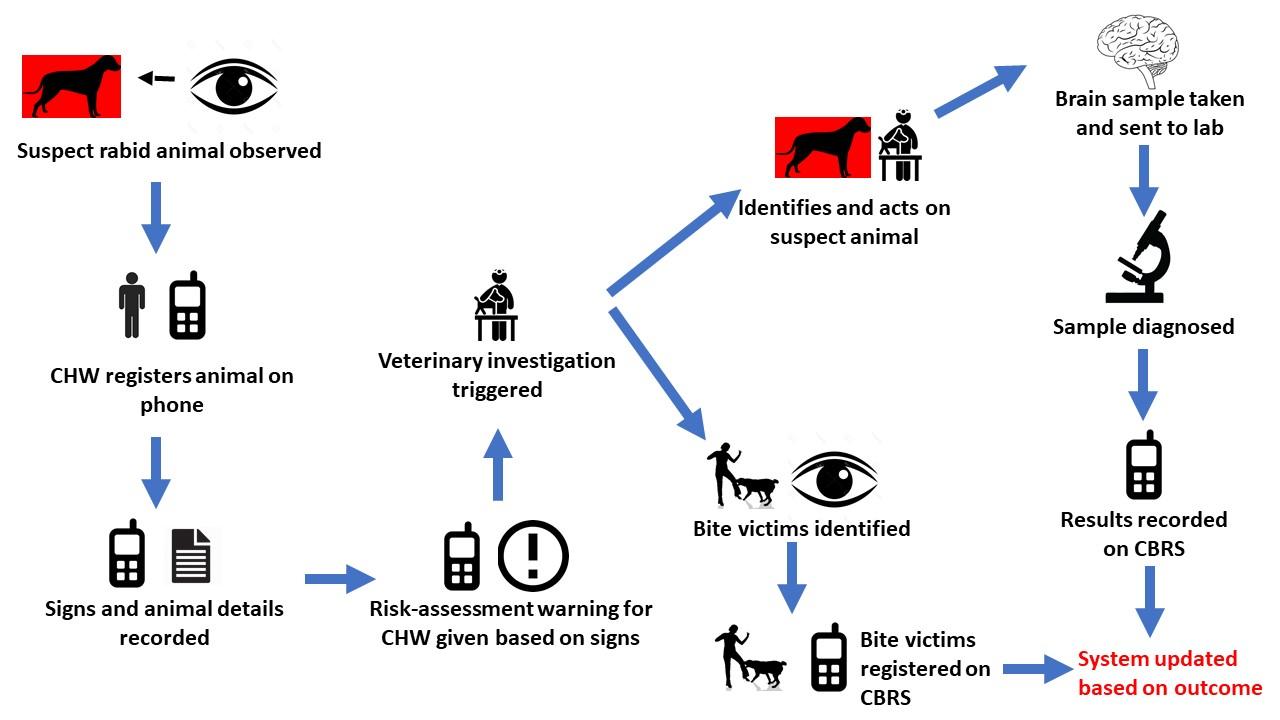GARC’s new community-based rabies surveillance tool released for testing and training
GARC has developed an easy-to-use software tool that is designed to provide simple, yet comprehensive, surveillance of both humans and animals that have been exposed to rabies. This new software tool is aptly named the Community-Based Rabies Surveillance System (CBRS) and now is in the final stages of testing prior to its pilot launch in the Philippines.
The CBRS tool was developed to facilitate integrated bite case management (IBCM) programmes, which track and monitor human bite cases and rabies-suspect animals that occur in the same geographical area. The implementation of an effective IBCM programme can be challenging because it requires strong intersectoral collaboration, reliable and accurate data collection and analysis, and rapid responses. The CBRS is one of the first rabies-dedicated software tools of its kind for IBCM, and is now available to assist countries in the implementation of effective IBCM programmes. The CBRS tool is part of the overarching Rabies Epidemiological Bulletin (REB), thus coalescing the grassroots-level IBCM data into the overall county surveillance data on the REB. The CBRS itself is a component of the REB, ensuring that all data gathered in a country via various means is stored, analysed and aggregated in a single system.
The functionality and ease-of-use of the CBRS was recently tested in an October training workshop in Muntinlupa City, the Philippines. This workshop was held for representatives from the City Health Office, City Veterinary Office, and the National Laboratory, as well as community health workers. The workshop was limited to 14 people who tested the CBRS, provided feedback, and reaffirmed their buy-in and their interest in using this tool.
The CBRS was well received and the feedback was positive. Participants–including people who rarely use computers–enjoyed using the programme and found it relatively intuitive to use. Within a short time, workshop participants were actively entering data from case scenarios. In addition, as part of the overall project, local government veterinarians and private practitioners were also trained by RITM in the straw technique for the collection of animal rabies samples.
Before the CBRS, the tools available to facilitate accurate rabies IBCM data collection were lacking and were designed only to address specific aspects of rabies surveillance data, such as dog vaccination, national data collection, and international data reporting. A truly integrated approach to event-based case monitoring has been elusive until the development of the CBRS tool.
GARC’s CBRS system has been designed to facilitate and improve active rabies surveillance at the community level through an integrated approach by including inputs from community health workers, veterinarians, human health professionals and laboratory professionals. This all-inclusive system tracks and links suspect animals and humans that have been potentially exposed to rabies. The CBRS not only helps identify these events, but also tracks the suspect animal or exposed person throughout the entire process, gathering the latest information of each event. Automated SMS and email notifications are also included, informing the relevant people of the event status.
Most importantly, apart from simply just tracking a suspect animal or an exposed human, the CBRS is capable of directly linking the exposed human to the suspect animal that may have bitten them, resulting in informed decision-making processes and actions. Thus, the CBRS truly incorporates the One Health ethos, directly linking human and animal cases, whilst automatically sharing the data between the sectors. The CBRS is versatile in the fact that a triggering event can originate from any source (i.e., an event can be initiated when a suspect animal is identified in the community; when a human bite victim is identified; when a sample is received at the laboratory; or when a dead animal is identified in the community). This versatility is one of the key features of the CBRS, making it an all-inclusive, event-based surveillance system for rabies.
Large-scale training for widespread implementation of the CBRS at the national level in the Philippines will begin in January 2019, after which the system will go live. Those interested in bringing the CBRS to their own countries are encouraged to contact GARC for more information on having the tool customized for their own country’s situation.
Article contributed by Dr. Terence Scott, GARC Rabies Epidemiological Bulletin administrator. Additional information on the Rabies Epidemiological Bulletin can be found here.
The CBRS is part of the CBRS pilot project of GARC implemented in Muntinlupa City, The Philippines in collaboration with the city government of Muntinlupa and the Research Institute for Tropical Medicine of the Department of Health.

